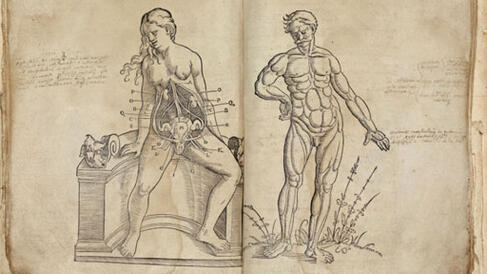Studying

Walther Hermann Ryff, Omnium humani corporis partium descriptio seu ut vocant anatomia... (1541) Image credit: Cambridge University Library
We welcome applications from outstanding candidates whose research would fall within the theme 'Generation to Reproduction'.
Possible areas for doctoral projects include, but are not limited to:
- patient–practitioner relations around fertility and other encounters that framed the generative body;
- the influence of diseases, including venereal diseases, on reproductive behaviour and demographic patterns;
- representation and communication of generation and reproduction;
- ancient, medieval and early-modern investigations into generation;
- generation and childbirth in medical cases and casebooks;
- the reorganization of knowledge of generation/reproduction, especially in the age of revolutions;
- such sciences as embryology, obstetrics, gynaecology, evolutionary biology, reproductive physiology, genetics and developmental biology;
- reform movements around birth control, population control and sexual science;
- twentieth-century transformations in techniques, experiences and regulation;
- networks linking academic biology to reproductive medicine and public health, agriculture, especially animal breeding, and/or pharmaceutical industry;
- techniques for monitoring and manipulating pregnancy, hormones, genes, gametes and embryos, e.g., pregnancy testing, genetic screening, in vitro fertilization and embryo transfer.
Informal inquiries may be made to the potential supervisor with the most relevant interests. Formal applications should be submitted, and funding applied for, through the relevant Department or Faculty in the usual way. The earliest funding deadline, for applicants from the USA applying for a Gates Cambridge Scholarship, is in October.
We also welcome applications from students wishing to take master's courses, including the MPhil in History and Philosophy of Science and Medicine and the MPhil in Health, Medicine and Society.
